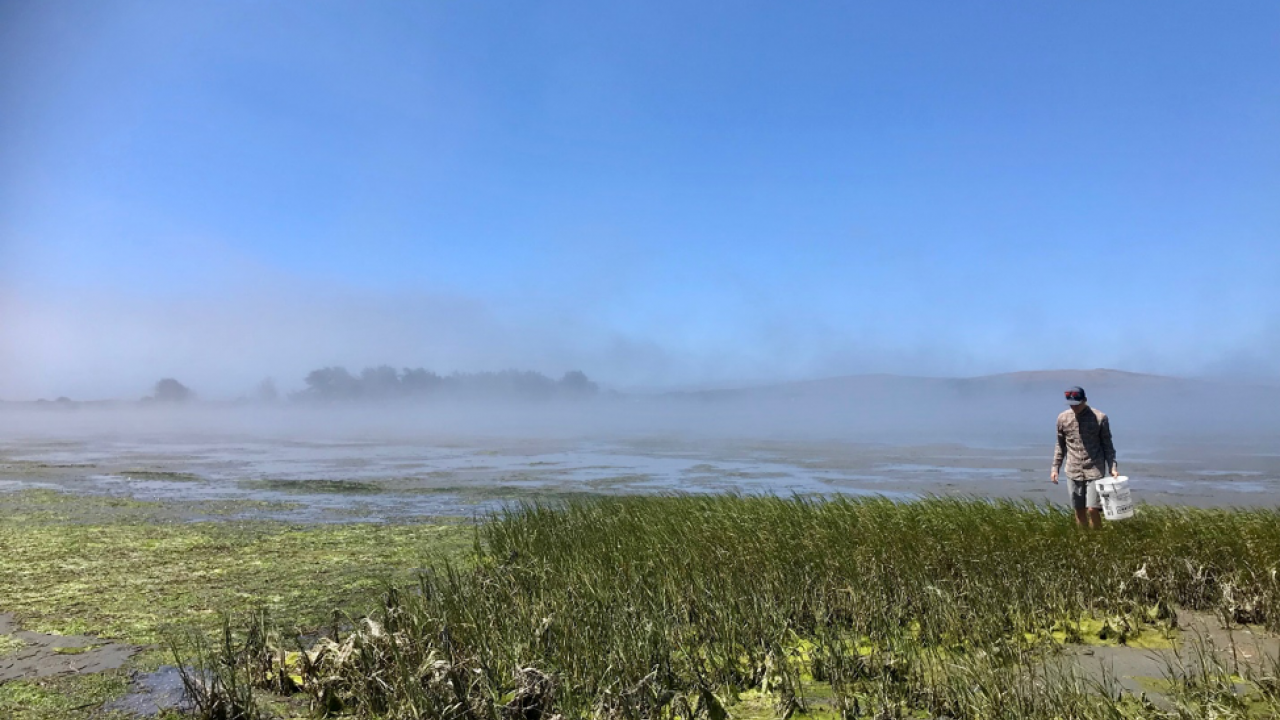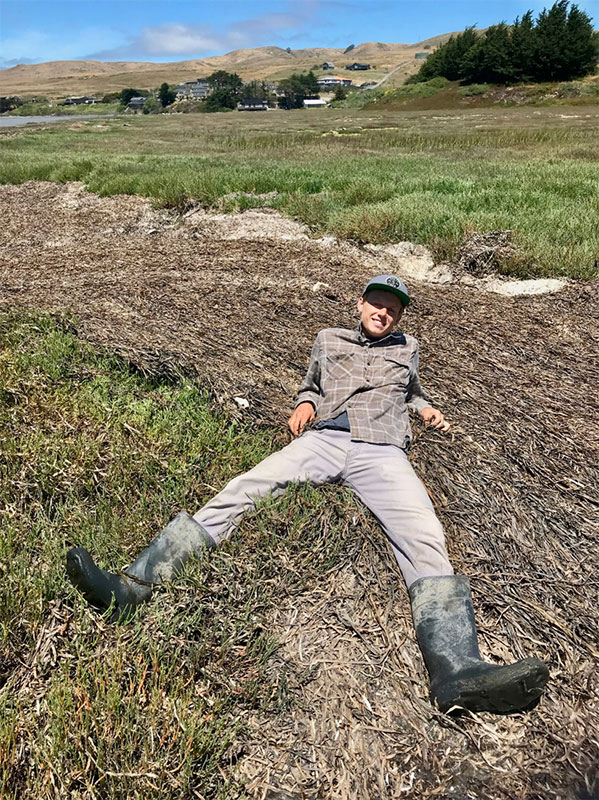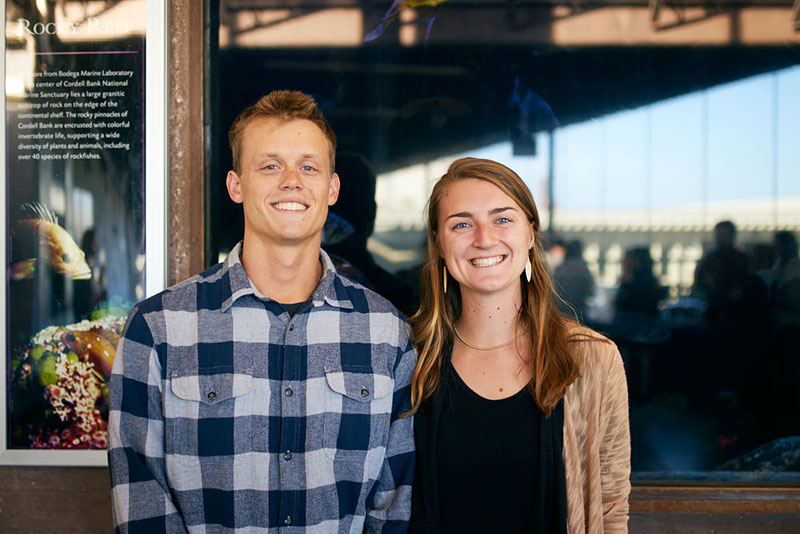
Salty and Soggy: Understanding the role of crabs in California salt marshes
My name is Blake Nogleberg and I am a fourth year SRJC student looking to pursue a career in the marine sciences. I worked alongside Graduate Student Jan Walker this summer.
As a kid I grew up only a short drive away from the Bodega Marine Lab (BML), and I was always intensely interested in what kind of work went on in this facility. So when the opportunity arose this summer to intern here, I did not hesitate to apply. My time at BML has been an amazing experience. I was able to work with and learn from some extremely talented scientists, help maintain field experiments in the salt marshes of Bolinas Lagoon, Tomales Bay, and Bodega Bay, as well as help conduct several laboratory experiments at BML. My mentor was Jan Walker, a PhD student from the Grosholz lab, and we examined the impact of the lined shore crab (Pachygrapsus crassipes) on the salt marsh plant community. Understanding the role of crabs in determining plant community composition is important when considering management strategies of foundational marsh species, such as cordgrass. Cordgrass has been targeted for management and restoration due to its amplitude of ecosystem services, such as sediment accretion, flood attenuation, and habitat for endangered species. We hypothesize that these crabs could impact the plant community by consuming dominant salt marsh plants (cordgrass and pickleweed), and by creating burrows in the marsh sediment, thereby changing sediment properties crucial for plant health (salinity, oxygen concentrations, etc.). Crabs may play a critical role in meditating stress for plants and, by understanding their role, we can better inform and bolster management and restoration in our northern California wetlands.
The field work portion was quite enjoyable. I spent most of the time chasing our crab friends and attempting to catch them without being pinched, their feisty attitude continually surprising me. There was a learning curve when it came to walking through the salt marsh, however I became proficient in navigating the spongy, quick sand-like landscape without swamping my boots or falling too many times. We woke up before the sun to catch the low tide, and we worked efficiently to collect data (and crabs) to make it back out of the marsh before high tide.
The lab work we did was interesting and engaging. I helped Jan setup two different feeding experiments to determine exactly what plants, and what part of the plant (roots or leaves), the crabs preferred. This portion of the internship allowed me to ask countless questions about our experiment, and the setup and execution of lab experiments in general. Additionally, I was able to get professional advice on how to navigate the unfamiliar territory of academia. It was infinitely valuable to be a part of Jan’s work, and the skills and knowledge I acquired over the summer have set me up to succeed in the next stages of academic life. I hope to use my experience here to further pursue a career in marine science.



